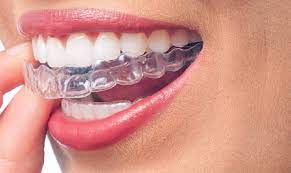Invisalign treatment is a practical resource for restoring your dental structure. It’s the preferred choice for many people due to various reasons. The braces are easy to remove and generally comfortable. The aligners also work well for fixing different types of tooth health complications. However, there is more to using Invisalign products than you would expect. The guide below should help you become better at using this product:
Steps in the Invisalign Process
Below are some of the steps involved in this dental health restoration process:
The Initial Appointment
During the first dental appointment, your practitioner will evaluate your mouth and give helpful advice for your dental health. The dentist will then inform you of whether this process would be suitable for your needs.
Usually, the fitting of aligners is a painless process, and don’t expect any pain killing medications. Some candidates don’t qualify for this process, and you might have to think about other options. However, if you are eligible, your dentist will then move on to the next step. The initial appointment will also involve discussing the best price on Invisalign.
Molding Process
Once your dentist identifies you as a suitable candidate, they will move on to an essential part of creating aligners. The next step is when the dentist uses specialized procedures to restore the structure of your tooth. The process might involve using x-rays, photographs, and more to create a graphic design of your mouth.
The data your dentist acquires from this process will help inform the final design of the aligners. Once the dentist identifies this graphic structure, they will then send it to the dental laboratory.
Wearing the First Tray
Once the Invisalign tray is ready, you should then proceed to take your dental aligners. You will usually receive a notification of when the product is ready, as it sometimes takes days to create. Your dentist will then place the aligners on your tooth and provide helpful removal tools you can use. The dentist will then determine whether the aligners are comfortable and offer a suitable after-care solution. A few days after wearing the braces, you will notice a few significant changes to your dental structure, including:
- A sense of tightness during the first few days of wearing the dental braces.
- Slight pain or discomfort around the deformed or remote areas of your tooth.
- A change in your dental structure and shape.
The Follow Up Appointment
You will also have to go back for refinement procedures from your dentist. During this time, your dentist will evaluate the progress the Invisalign has made on the structure of your tooth. Unlike braces, you won’t have to go for several check up appointments.
During the follow-up appointment, it’s also good to consult with your dentist on various process details. These include details on whether you are on the right track to dental restoration or whether you might need further adjustments.
Instead, you may consult directly with your dentist to determine the best occasion for you to get a simple checkup. Plus, you won’t have to change the aligners, especially if you have a healthy lifestyle. You may have to get refinements when the following issues occur to your aligners:
- When they are uncomfortable to the point of experiencing intense pain.
- When a few months pass without any noticeable results.
- When the aligners have stains or have any form of deformity which can affect your dental structure.
The Results
Expect the dentist to remove the braces after six months of use. However, the removal period also depends on whether your teeth have an improved structure. People who follow through with all the correct aligner user protocols will notice improvements even earlier.
Your dentist might recommend further use of the aligners if your teeth fail to take up the proper structure. The dentist’s recommendation may also depend on your personal preferences. You can decide to get the aligners again later, but expect to start the process all over again.
As you have noticed, dental aligners are indeed an excellent resource for restoring the structure of teeth. However, there is more to using such products than you would traditionally expect. You have to consider various factors and consult with your dentist regularly.

